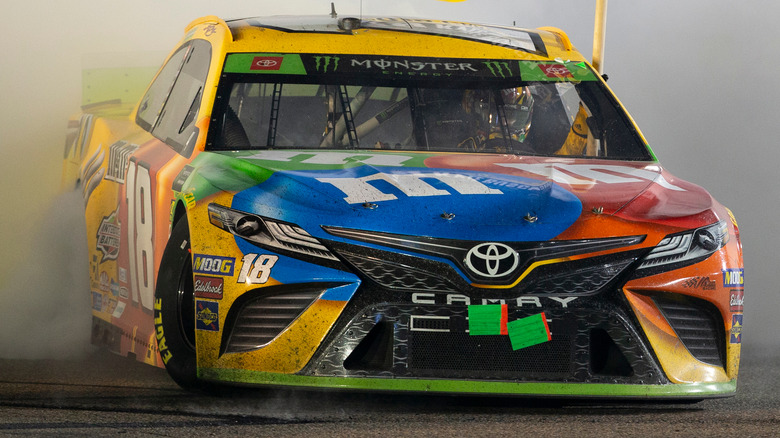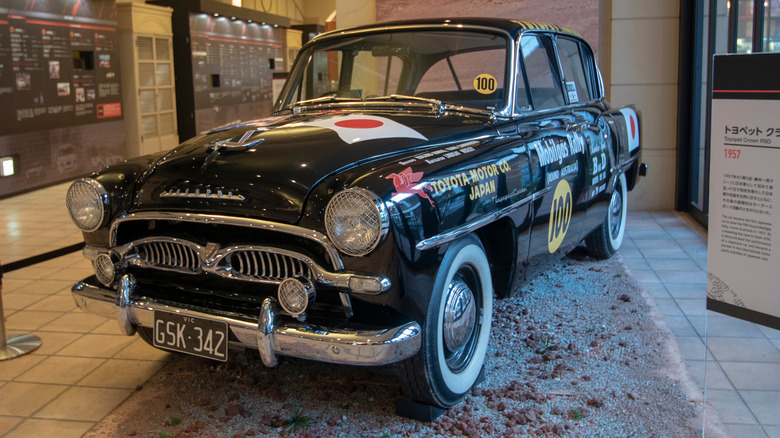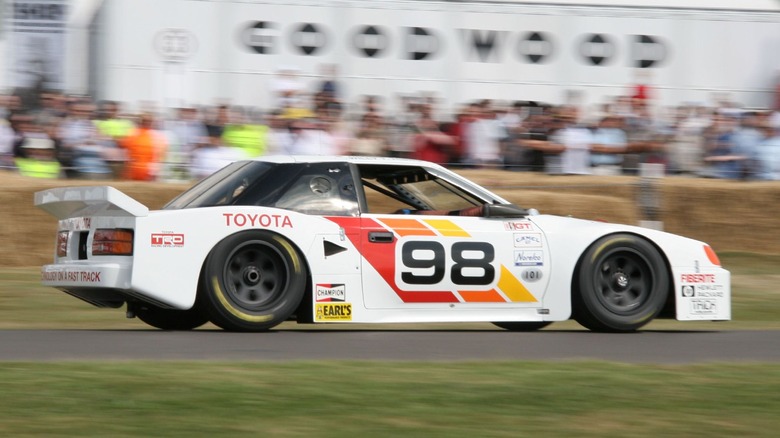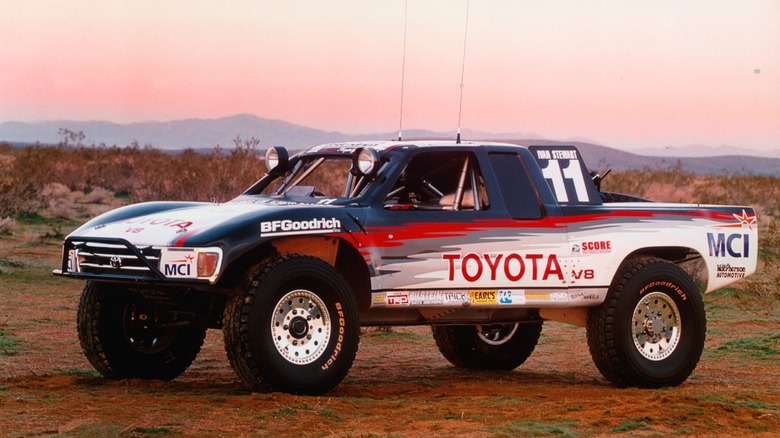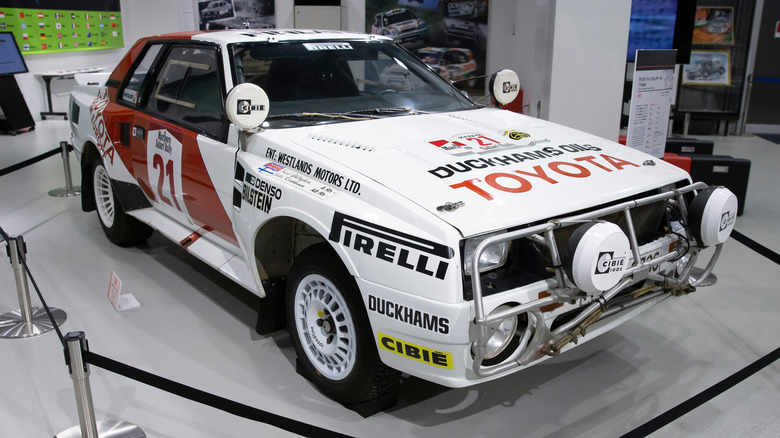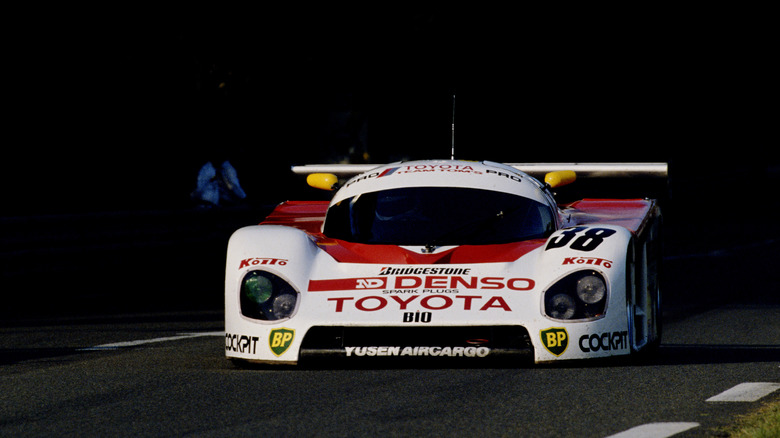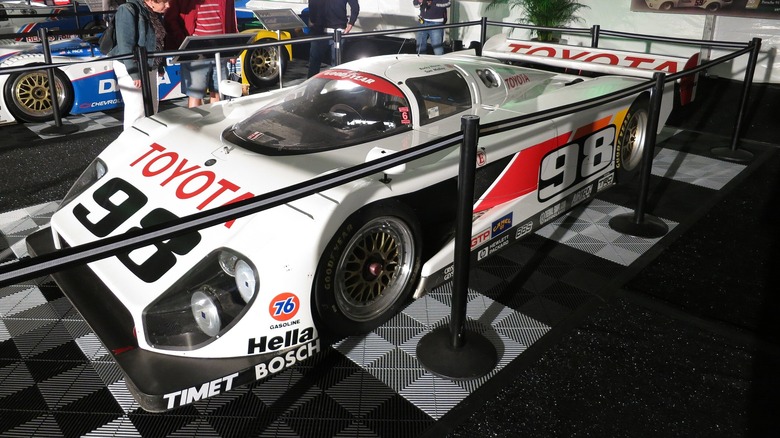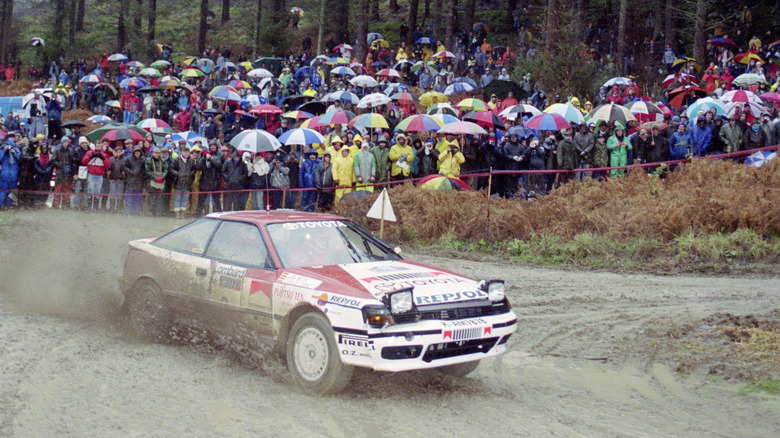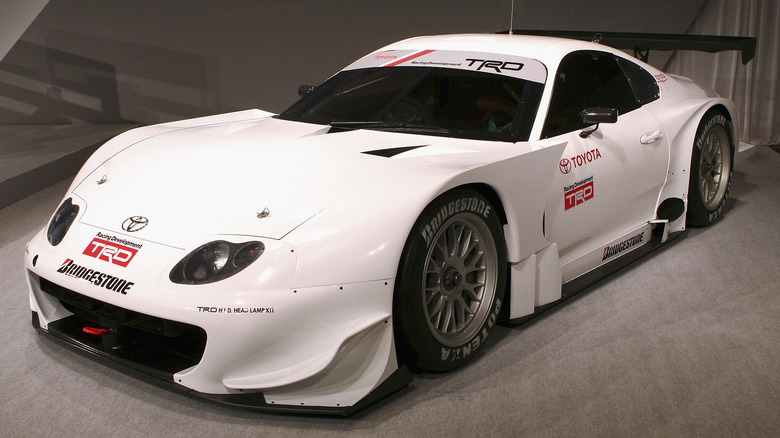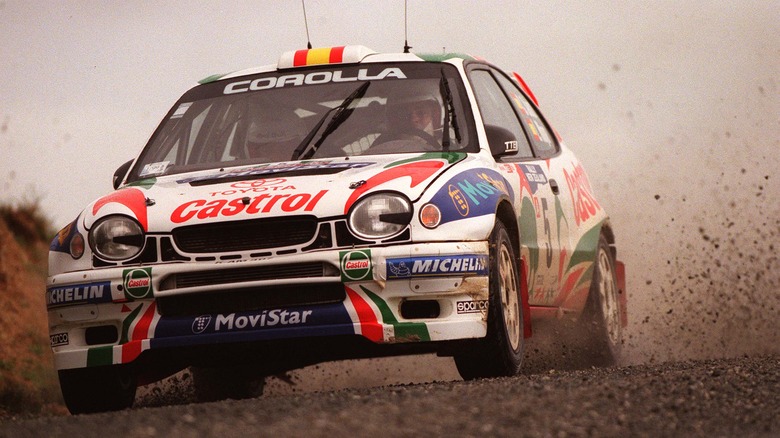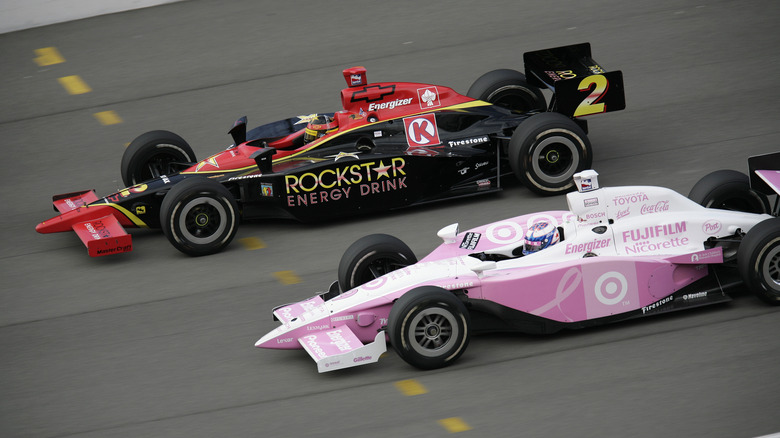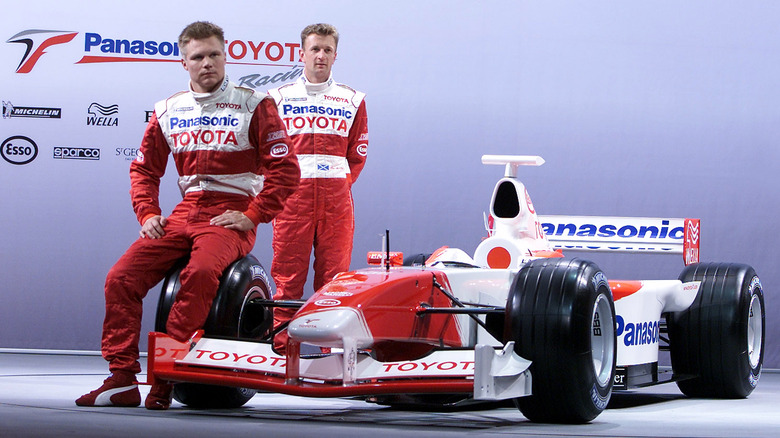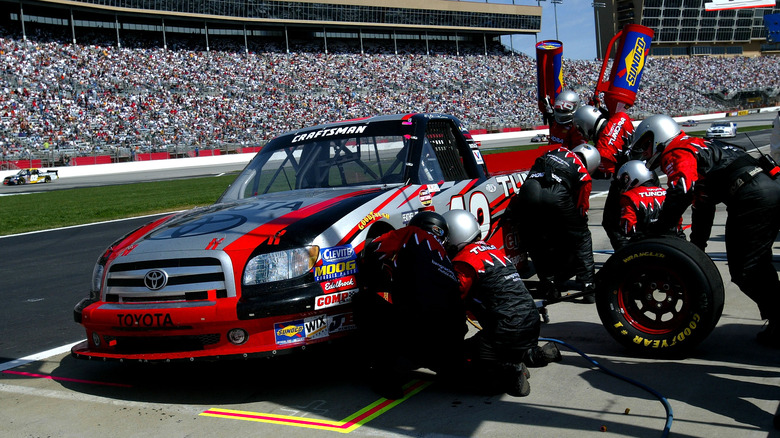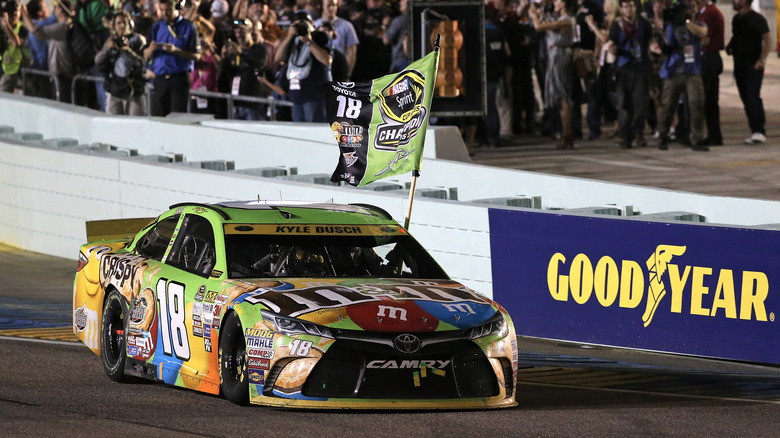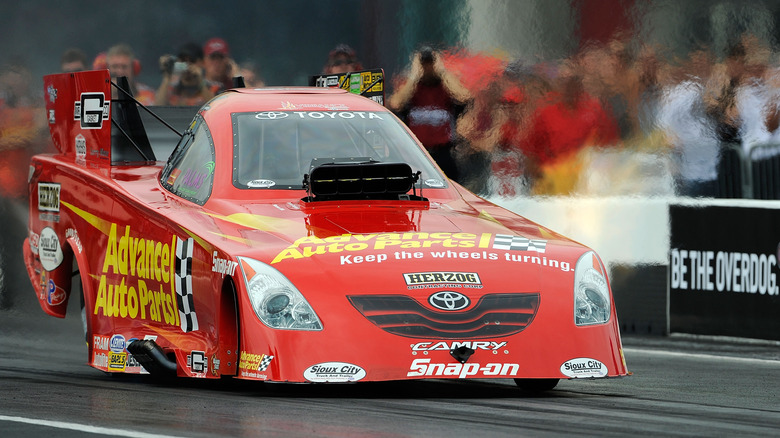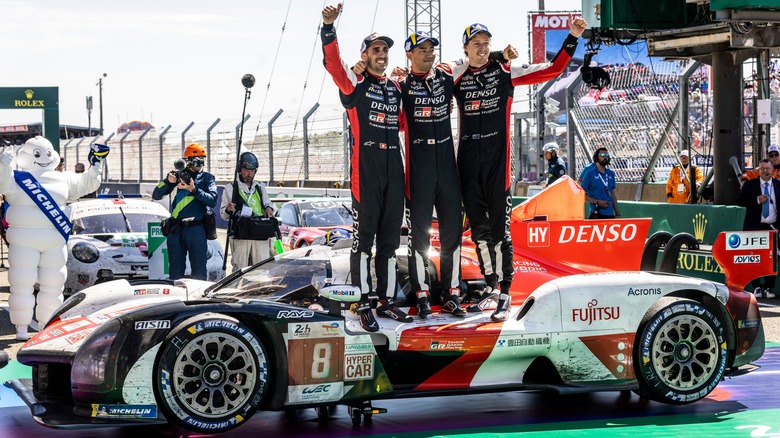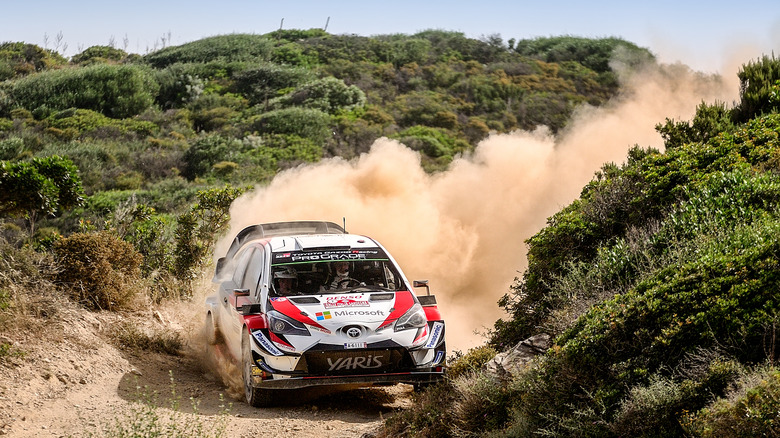TRD: A History Of Toyota And Racing
Few car manufacturers can lay claim to competing in such a wide range of motorsports as Toyota. The world's biggest automaker has remained keen to use racing as a way to both promote its brand while developing its technology since its earliest days, and over the decades the company has racked up wins in every discipline from rallying to NASCAR. Toyota's motorsports division has a long and sometimes complicated history, with various partnerships that allowed it to enter many of the world's biggest racing series.
However, a key theme that runs through all of the brand's sporting efforts is that it has always preferred to do things its own way rather than buy into a racing series as a sponsor. It's not always been a successful strategy –- Toyota's history is filled with both legacy-defining highs and humiliating lows -– but it's put the brand among an elite tier of manufacturers who bring something new to every series they enter. The brand's current successes across global racing series mean there will likely be many more trophies added to the cabinet in the future, but for now, here's Toyota's motorsports story so far.
Pre-TRD: Toyota's early racing history
The 1950s was a transformational decade for the Japanese auto industry and indeed for Japan as a whole. A remarkable economic resurgence saw Japanese automakers expand rapidly, buoyed by increasing domestic demand for cars. It was during the latter half of the decade that Toyota became one of the first Japanese manufacturers to compete in a foreign motorsport event when it entered a car into the grueling Round Australia Trial in 1957. Toyota's executives had been keen to enter the world of motorsport, seeing it as an opportunity to develop the technology and reliability of the brand's cars.
An invite from the Australian consulate encouraged them to take the leap, and so a Toyopet Crown Deluxe was modified by a small group of engineers and sent off to Australia for the 10,000-mile rally. The team responsible for the car was christened Toyota Sports Corner — or Tosco — and it was this small division that would eventually evolve into TRD.
Despite having no previous competition experience, the Toyopet finished the race, placing third in the standings for foreign entries. This early success encouraged Toyota to continue developing cars for competition, and over the following years, Tosco developed a range of race cars for various emerging series across Japan. Among the highlights was the world's first turbocharged race car, the Toyota 7 Turbo.
TRD's formation
Tosco was officially renamed Toyota Racing Development, or TRD, in 1976. As well as continuing to race in various series across Japan, bosses set their sights on more high-profile, international racing series, but there was a problem. The small existing Japanese team didn't have the capacity to venture into a new series, so an international arm was launched with the aim of expanding into racing in America. TRD USA was formed in 1979 as an entirely separate outfit from Toyota USA, the division responsible for American car sales.
Instead, it was linked directly to TRD in Japan, which allowed the American team to gain access to the outfit's existing performance parts as well as create their own. In 1981, TRD USA entered an American motorsports series for the first time with a Celica that raced in the GTU class in IMSA. Following that, the team gradually expanded its operations in the series over the following years and even won the GTO class in 1987.
[Featured image by Brian Snelson via Wikimedia Commons | Cropped and scaled | CC BY 2.0]
Ivan Stewart joins TRD
One of the earliest partnerships to put TRD USA on the map was that between the racing outfit and driver Ivan Stewart. In an interview with Toyota USA, Stewart recalled that he was initially reluctant to join the team, since the trucks were smaller and less powerful than the ones he was previously driving. However, after seeing the team's dedication to what they were building, he eventually agreed to race for them. It turned out to be a very wise move –- he joined in 1983 and by the end of the decade, had racked up multiple wins in both desert and stadium racing series.
His 1993 season was an exceptionally successful one, as he won the Baja 500, Baja 1000, and Mint 400 all in the same year. In total, Stewart has won 84 events and 10 championship titles, including a record-breaking 17 Baja 500 wins. His success also spawned a classic 1989 arcade game, "Super Off-Road," in which players could race Stewart's Toyota truck.
Rallying and Toyota Team Europe
Alongside TRD USA's racing efforts, one of Toyota's most successful motorsports stories has been its history in rallying. However, its earliest efforts were a far cry from the all-conquering Gazoo Racing team of today. Initially, Toyota's racing division (then still called Tosco) built two cars for entry into the 1970 Monte Carlo Rally, although neither finished.
Undeterred, Tosco built a rally-spec version of the newly released Toyota Celica and enlisted Swedish rally driver Ove Andersson to drive it at the RAC Rally in 1972. It won its class, and the following year, Andersson founded his own independent rally team with backing from Toyota. In 1975, it was renamed Toyota Team Europe (TTE), although it remained a separate entity from Tosco.
The same year, TTE claimed its first win in the World Rally Championship, in Finland with Hannu Mikkola behind the wheel. After several years of mixed results, the launch of the new Celica TCT in 1983 demonstrated a more consistent pace, winning three times each at the Safari Rally Kenya and the Ivory Coast Rally. This led to the Celica being dubbed the King of Africa, but its competition career was unceremoniously cut short with the banning of Group B in 1986.
Early Le Mans efforts
Alongside its efforts in truck racing and rallying, Toyota was also keen to expand its international operations into endurance racing. By 1985, TRD Japan already had experience building prototype cars for its domestic racing series and decided to develop a prototype to compete in 24 Hours of Le Mans. A car was developed in collaboration with Japanese racing manufacturers TOM'S and Dome that featured a 4T-GT turbocharged four-cylinder engine which was also being used in Toyota's rally cars.
The initial running didn't go to plan, as one car failed to finish and the other placed 12th. Over the following years, Toyota continued to develop its Le Mans prototypes with limited success. The 1990 running of the event saw the brand achieve a best finish of sixth place, and it would take until 1992 for the team to reach the podium, taking second place. Toyota would continue fielding entries throughout the '90s, managing another second place finish in 1999 before bowing out of the competition.
Successes in IMSA and the Eagle MkIII
While the racing program was struggling to conquer tracks in Europe, TRD USA had much better results in the IMSA series. After its initial entry in 1981, Toyota quickly rose through the ranks, taking the manufacturers' championship title in the GTO class in 1987. However, the brand's most dominant car, the Eagle MkIII, didn't debut until 1991.
The Eagle MkIII proved to be essentially unbeatable in the GTP class, taking wins in a staggering 21 out of 27 races it competed in. Its combination of cutting-edge aero and seemingly endless reserves of power –- TRD squeezed around 800 horsepower out of the blown 2.1L four-cylinder engine -– meant other manufacturers just couldn't compete.
One by one, they withdrew, and by the time the 1992 season had concluded, the announcement had been made that GTP regulations would be scrapped altogether after 1993. Toyota continued its factory support of the Eagle MkIII throughout the last season before it was forced to retire its exceptional car.
[Featured image by The359 via Wikimedia Commons | Cropped and scaled | CC BY-SA 3.0]
WRC golden era and ban
Meanwhile, back in Europe the early '90s also saw TTE's rally program reach new heights. The team had been blindsided by the decision to ban Group B after 1986, leaving it scrambling to put together a Group A competitor for the following seasons. Lancia dominated through the late '80s, but by 1990, a stellar drive by Carlos Sainz delivered Toyota its first drivers' title. Sainz won the championship again in 1992, and in 1993, Toyota won both the drivers' and manufacturers' championships. It would repeat the feat the following year before a scandal saw the team unceremoniously ejected from competition in 1995.
Toyota Team Europe, which had been officially acquired by Toyota in 1993 after decades of semi-autonomy, was caught cheating by the FIA and banned from competing. It was discovered that Toyota was using an illegal turbo restrictor, which was engineered in such a way that it was extremely difficult for scrutineers to spot at inspections. As reported by Rally Sports Mag, the FIA's president at the time famously called it, "the most sophisticated and ingenious device I have ever seen in 30 years of motorsport."
The turbo restrictor served to give the Celicas an extra power boost over their competition, and its discovery led to the FIA giving TTE a 12 month ban from the championship.
Racing successes at home
While Toyota's European racing outfit was making headlines with its cheating controversy, TRD's Japanese division was busy racking up wins in all levels of domestic series. In 1995, Toyota broke a slew of sporting records, winning the drivers', manufacturers', and engine manufacturers' titles in the Japanese Formula Three Championship, a feeder series for the top level of open-wheel racing in Japan. It was the third consecutive year that Toyota had won the manufacturers' title and a record level of domination, with the team winning eight races that season.
The same year also saw Toyota's first full participation in the Japanese GT Car Championship. It entered both the newly-formed GT300 and GT500 classes, winning with a Supra in the latter class at Sendai. The series is now known as Super GT and is today one of Japan's largest motorsports championships.
Toyota has continually participated in the series and taken a plethora of titles, recently pulling off a dramatic win in the last round of the season to clinch both the 2023 drivers' and manufacturers' titles.
Returning to the WRC
As TRD Japan was building the foundations of its successful domestic touring car program, Toyota Team Europe was starting anew after its World Rally Championship suspension. The 1997 season saw Group A cars replaced by a new class confusingly called World Rally Car, or WRC for short. It would take until 1998 for the car to show its true pace, taking the top spot at the Monte Carlo Rally at the hands of Carlos Sainz.
It would turn out that the '98 season would be a very memorable one for Sainz, but not for the right reasons. He was in the running for the drivers' championship right up until the season's final rally, held in the UK. However, in a cruel twist of fate, his Corolla gave out less than half a mile from the finish line, leaving Sainz stranded and unable to do anything but watch as Tommi Mäkinen swept in to take the overall title.
The following year brought better fortune for Toyota, which won the manufacturers' title for a third time before leaving the sport to focus on its upcoming Formula One program.
A rollercoaster stint in IndyCar
Toyota's time in IndyCar racing was a turbulent one. The team joined CART in 1996, the same year the Split saw the creation of the rival Indy Racing League and tore apart the sport. In its first few seasons, Toyota saw limited success, but after a breakthrough in the 2000 season, the team began to be considered a title contender for the following year. Ultimately, it couldn't quite deliver on those hopes, but in 2002, it took the top spot in the manufacturers' championship. By that point, the CART series was on the decline, and Toyota had announced it would switch to the upstart IRL series in 2003.
That meant Toyota teams could participate in the Indy 500 for the first time, and their first showing gave the manufacturer a decisive victory. Six out of the seven top finishers boasted engines manufactured by TRD, with Gil de Ferran coming out on top as the winning driver.
It seemed like the stage was set for Toyota to become a dominant force in the sport, but that wasn't to be. Despite a triumphant debut IRL season in 2003, Toyota couldn't match those highs over the following years, although it did notch up several more wins before pulling out of the competition after the 2005 season.
An unsuccessful Formula 1 entry
A recurring theme across all divisions of Toyota's motorsport department is the desire to do things independently. Rather than buy an existing motorsport team, Toyota prefers to build one from the ground up. Sometimes, this is a very successful strategy, but in other cases, years of development and billions of dollars of investment translate to disappointing results. Arguably, nowhere is this more evident than Toyota's ill-fated Formula 1 effort, which was first announced in 1999. The team's first race was the Australian Grand Prix in 2002, with driver Mika Salo taking a respectable sixth place.
However, over the following seasons, the team struggled with consistency, showing occasional competitive pace but never being able to see it through a full race weekend. The best result the team ever managed was a handful of second place finishes, never winning a race despite having one of the largest budgets in the sport.
The team's high running costs led to Toyota pulling out of F1 altogether in 2009 as the global recession began to bite. In the years since a string of rumors has linked Toyota to a potential return to the sport, but bosses recently strongly denied any intention to rejoin for the foreseeable future.
Joining NASCAR
Much like the manufacturer's F1 effort, its entry into NASCAR saw it develop a presence from the ground up. After starting small in 2000 with a works Celica in the regional Goody's Dash Series, Toyota entered the Craftsman Truck Series in 2004. In an interview shared by Toyota, TRD USA president David Wilson described the program as "entering the bastion of American motorsport," and stressed that the team was aware that, as a Japanese automaker, they "needed to be good citizens."
This cautious approach paid dividends, as it took just three seasons of racing trucks for Toyota to claim both the manufacturers' and drivers' titles. These were the first of many trophies to be added to TRD's NASCAR cabinet, with the automaker taking the manufacturers' title five years running between 2006 and 2010. Toyota continues to race in the Truck Series and has produced a string of drivers' champions, but from 2007, it made the leap up to the next level of the sport.
Winning NASCAR again... and again
Entering the Nationwide Series was a gamble for TRD, but it soon paid off, as by 2008, Toyota had already taken the manufacturer's title. The 2009 season was even better, with Toyota taking both the manufacturers' and drivers' titles thanks to Kyle Busch. The Japanese automaker prevailed as the top manufacturer again in 2010. It took a little longer for Toyota to reach the top in the Cup Series, but by 2016, the brand achieved a clean sweep, winning its first Cup Series manufacturers' title, plus titles in the Xfinity Series and Camping World Truck Series in the same year.
It has claimed the manufacturers' title in the top tier of the sport twice more since then, alongside three drivers' titles in 2015, 2017, and 2019, twice with Kyle Busch and once with Martin Truex Jr. In particular, the 2015 win was monumental for TRD –- not only was it the first Toyota drivers' title, but Busch made a remarkable comeback after missing the first part of the season due to injuries.
Toyota in NHRA
Another all-American sport where Toyota has a long-standing presence is drag racing, with the automaker recently achieving the milestone of 200 event wins. TRD first entered the sport in 2002 and won its first event two years later. It has competed across both the Funny Car and Top Fuel divisions, with its most successful driver being Antron Brown. After switching to Top Fuel drag racing in 2008, Brown made history by becoming the first African-American driver to win a major motorsports title in the U.S. He took the division drivers' title in 2012 and would go on to win twice more in 2015 and 2016.
Alongside Brown, eight other drivers have also scored event wins in the double digits for Toyota. Most recently, Doug Kalitta took home the Top Fuel drivers' title for 2023, and it's likely that even more wins are just around the corner, as Toyota announced a renewed multi-year partnership with the NHRA at the end of the 2023 season.
Winning in WEC
Despite the limited successes of its first stint in endurance racing, Toyota returned to the sport in 2012. This time around, the outfit's efforts were rewarded, with its hybrid prototypes quickly showing competitive pace and taking second place in the 2013 World Endurance Championship. By 2014, it stood at the top of the leaderboard, taking both the WEC drivers' and manufacturers' titles. Its next title was won in the 2018-2019 season, although in unusual circumstances — Toyota was the only standard manufacturer taking part in the top LMP1 class, and so didn't really have any competition.
Toyota also won in 2019-2020, but again was the only factory-backed entry. The 2021 season saw some additional competition for the new Hypercar class crown, with Alpine and Glickenhaus joining Toyota. However, Toyota comfortably won well ahead of the second-place Alpine team. Competition was a little closer in 2022, although Toyota again came out on top.
The real challenge came in the 2023 season with the re-entry of big names like Ferrari, Porsche, and Cadillac, but Toyota again ended the season with the manufacturers' and drivers' titles.
WRC dominance
Alongside its endurance racing efforts, Toyota's European motorsport division also re-entered the World Rally Championship in 2017. Rally legend Tommi Mäkinen was brought on as team principal while Toyota president Akio Toyoda personally oversaw the program as team chairman. It didn't take long for Toyota to reclaim its place at the top of the sport — Toyota Gazoo Racing claimed the manufacturers' title in 2018, and then Ott Tänak brought home the drivers' title in 2019.
One of the sport's most successful drivers ever, Sébastien Ogier, joined Toyota in 2020, winning the drivers' title that year and repeating the feat in 2021. The same year, Toyota also picked up the manufacturers' crown. It defended that title in 2022 and 2023, while young gun Kalle Rovanperä shocked fans by claiming the drivers' title for Toyota both years.
Rovanperä made the surprise decision to step back for the 2024 season, leaving Toyota without its defending champion, so the pressure is on previous runner-up Elfyn Evans to retain Toyota's crown at the top of the sport in 2024.
